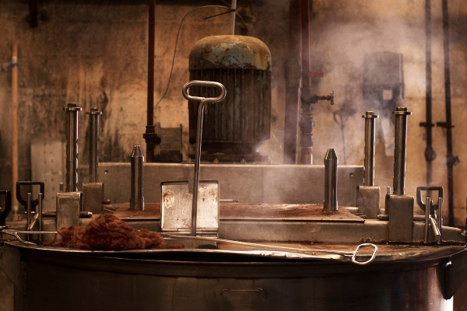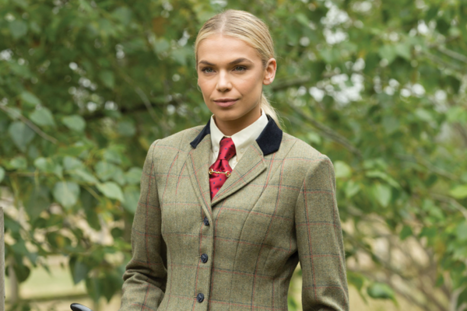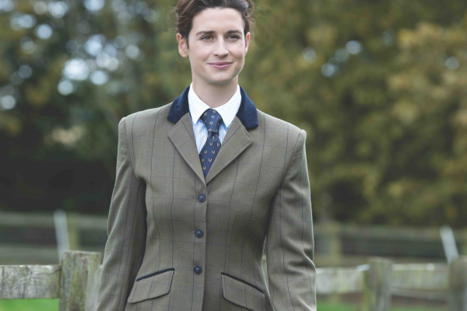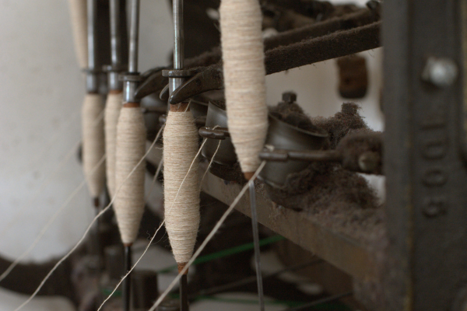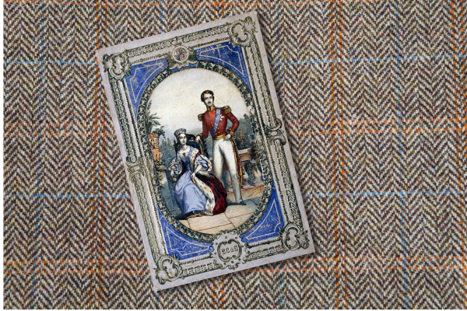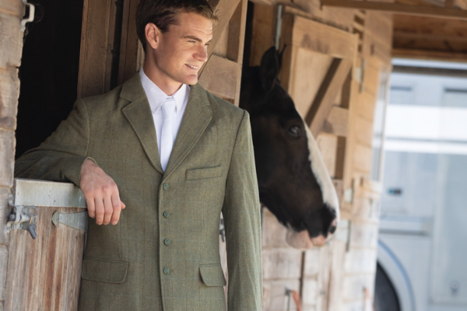Ever wondered where tweed originated from? As purveyors of exclusive tweed show jackets and lead-rein outfits, we share the history of tweed and share our expert tips and advice for choosing the best tweed for your equestrian discipline.
Where Did Tweed Come From?
Tweed was originally developed in the Outer Hebrides, it was created by crofters that used the wool from their sheep, to shield them from the brutal Scottish winters. Tweed was exceptionally popular with farmers and land owners when they were over seeing their lands as it was warmer, comfortable and to an extent waterproof. They would use their ‘Hack’ to ride and check over the estate, hence the hacking jacket.
Tweed is in fact a typo made by a Merchant in London, the Scottish actually referred to it as ‘tweel’, which stems from the Scottish word for twill due to the structure and manner in which it was made. But the Londoner had no clue about this and thought the name had been taken from the Scottish river Tweed in the Borders.
Horse riders first began to wear the tweed hacking jacket in the late 1800s as a practical garment worn while riding horses. Made from durable tweed fabric that could withstand the harsh conditions it was designed to be fitted and tailored, with a shorter length and a more streamlined shape.
In the early 1900s, the jacket became popular with the upper classes in Britain and was often worn as a hunting jacket. It was at this time that the jacket began to feature a distinctive three-button design and a single vent at the back.
How Did Tweed Become Fashionable?
Queen Victoria and Prince Albert made Tweed even more popular after they purchased Balmoral. It became fashioned to partake in outdoor pursuits, such as stalking and hunting and the aristocracy quickly took to this new trend.
Tweed hit its peak in the fashion world after endorsements from designers like Coco Chanel. Harris tweed in the 1960s is said to have sold 7 million metres. Now in the 21st century, tweed is enjoying its latest revival. The benefit of a tweed outfit is that, since its creation, tweed has never been out of fashion.
Why Is Tweed So Popular With Horse Riders?
Tweed is still very popular with horse riders due to warmth and the fact that is a naturally weather-resistant material, thanks to the water-repellent fibres. It is hard wearing and classical, so it never dates and you will regularly see tweed riding jackets in hunting, showing and dressage.
Tips For Choosing A Tweed Riding Jacket
It’s essential that your tweed hacking jacket fits your body type correctly. In the majority of cases jacket sizes are stated in inches. Freedom of movement is key, so choose a jacket that feels comfortable and fits!
If your jacket is too small, it will look untidy and can also limit your performance, as it will hamper your movement.
When trying a jacket on there are certain aspects to check;
1) The arm length: Always make sure that when your elbows are bent in the riding position that the sleeve length is still ok.
2) Check that when in the jumping position that your jacket is pulled tight across your back.
3) Lastly, check the length of the jacket by squatting in a riding position. A jacket that is too long in the body will make your leg look shorter. Ideally the jacket should finish a few inches below your hipbone.
Most companies will have a junior fit normally from a 22” to a 28”, a ladies fit from a 32” to a 50” and also a maids fit from a 30” to a 34”. The maid’s jackets are intended for that crossover period between child and adult. So, whilst they have adult proportions they are still a straight cut and have a shorter sleeve and body like the junior jackets. It is also essential that you have enough room in the sleeve to move. Horse riders tend to have more strongly developed biceps so your jacket needs to be able to accommodate this.
Tweed Jackets For Showing
One of the most closely associated disciplines with tweed today, is Showing. Depending upon which class you choose depends on whether you would need a riding jacket, tweed waistcoat or a tweed lead rein outfit. Check the breed standard for what to wear in the ring to make sure that you are correctly dressed for your classes. Choose Colours That Compliment
When you are deciding on a new tweed riding jacket you also need to think about the horse or pony you are riding. Brown tweeds look fantastic on a chestnut or a bay. Whilst green tends to look best on a grey, black or coloured.
Your tie and shirt should complement the tweed you are wearing for an overall look. Try to pick out the colours of the over-check in the tweed to really make your outfit a stand out.
Hunting Tweed Jackets
Tweed (ratcatcher) has always been used for autumn hunting or ‘cubbing’ as it is otherwise called. This is the more informal dress in autumn hunting and used as a gentle introduction to the sport for young or inexperienced riders, hounds and horses. Autumn hunting in the UK runs from late August to the opening meeting at the beginning of November.
Eventing Tweed Jackets
Lower level eventing also uses tweed for both the dressage and show jumping phases. Tweed for event riders tends to be less ‘stand out’ than those used for showing. The over-check tends to be plainer and the colours are not as bright. It has more in common with cubbing tweed for hunting, rather than showing.
The Latest Developments In Tweed Riding Jackets
Whereas, traditional tweed was always 100% wool, these days tweed can be made from either pure wool or a wool blend. Some tweeds are now so versatile that they are machine washable due to how they are made and their fabric construction. The benefit of a pure wool jacket is that they tend to be slightly warmer and thicker. Whereas, the wool blend ones are lighter weight and often have more stretch to them. We are at the cutting edge of tweed fabric innovation and have successfully added stretch to traditional looking tweed and modern horse riders love it!
How Much Should You Pay For A Tweed Riding Jacket
The price will depend on your budget and also what you require your jacket for and the amount of use you get out of it. A tweed jacket should always be looked at as an investment and our recommendation is that you buy wisely and it will last and stand the test of time and wear. Some of our customers have had their Equetech tweed jackets for over ten years and they are still enjoying them!
Wool blend tweed jackets are generally machine washable. This is especially useful for children who tend to get much dirtier than adults!
Our tweed jackets are tailored to look like and feel like made-to-measure tweed riding jackets but without the hefty price tag. With a generous size range and available in men’s, ladies and junior sizing, our tweed riding jackets are a great choice for riders who want a designer look at a fraction of the price. Our tweed cloth is often Limited Edition, so you will find that every season we launch new look tweeds so you stay looking unique and stand out from the competition!

